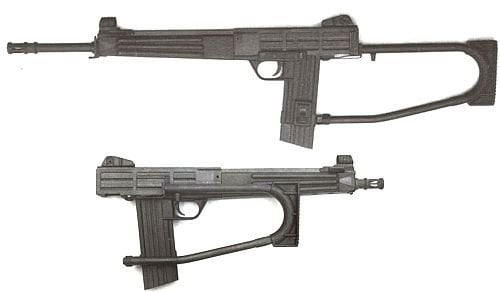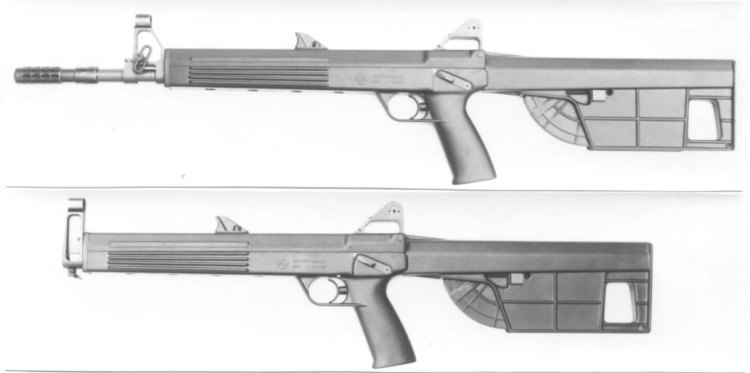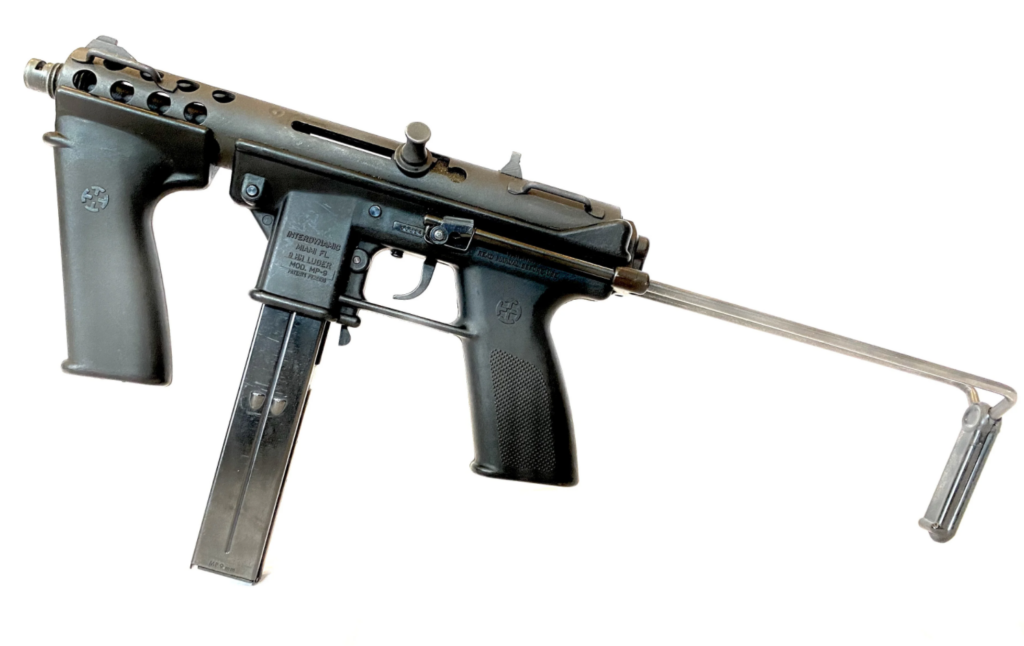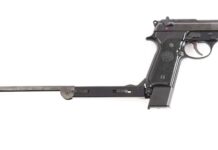
I’m a fan of historical weapons and a fan of weird weapons. Occasionally, there is a cross roads of historical and weird. Actually, that happens a lot. Weird guns rarely make it past the prototype stage, and that happened more than a time or two with a little company called Interdynamics AB. This Swedish company wasn’t shy about making weird and interesting firearms. Unsurprisingly the one gun that succeeded was a fairly standard one, and it only succeeded on the civilian market.
Who is Interdynamics AB
Interdynamics AB was a Swedish company that manufactured firearms from the late 1970s to seemingly the mid-1980s. Sadly, there isn’t much information about the company while it resided in Sweden. After it moved to the United States, things got a little lively, and the history became a little clearer.

One thing we do know is that George Kellgren worked as an engineer with Interdynamics AB while living in Sweden. George Kellgren is famously the owner of KelTec. Two of Interdynamics AB’s rifles were super weird, which makes sense. KelTec famously makes some of the weirdest guns on the market.
George Kellgren’s role in the development of the MKR and MKS assault rifles remains a mystery. However, given his current work with KelTec, it’s hard not to speculate that he had a significant influence on their design. We do know that he played a key role in the creation of their most successful firearm, the MP-9, and was instrumental in the company’s move to the United States.
The Interdynamic MKS
Interdynamic AB’s first weird rifle prototype was the MKS. It was created in 1979, as intermediate cartridges were becoming all the rage. The MKS utilized the 5.56 caliber round with a fairly conventional gas-operated design. Most sources list the rounds per minute as between 700 and 1,000. It’s tough to say if it’s variable or just poorly calculated.

Things got weird because it seemed like someone looked at the Uzi, said that’s a great idea, and took some cues from that. Mainly, they used the detachable magazine as the pistol grip. I’m sure everyone reading this has held an AR magazine and realized it’s not quite ergonomic to use as a grip. The end goal was to create a very small rifle, which they seemed to have accomplished.
The rifle also featured a folding stock. It folded to the side, and overall, it was extremely compact. Of all the ideas out there, this was certainly one of them. The rifle was tested in the Philippines according to the Small Arms of the World: A Basic Manual of Small Arms but was found to be uncomfortable—not much of a surprise. The weapon faded away, but Interdynamics wasn’t done with assault rifles.
The Interdynamics MKR
Interdynamics learned some lessons from the MKS when they began developing the MKR. Namely, they learned that you can make a short rifle without using the magazine as a pistol grip. The MKR was a more traditional bullpup, which feels odd to type as bullpups are anything but traditional.

The MKR came in two models, the normal of the two being the 5.56 model, which used a gas-operated design. The 5.56 variant used an early production polymer nylon magazine made by GAPCO. The second model used a super high-velocity 4.5x25mm round that fed from a rear-mounted, crescent-shaped magazine that held 50 cartridges. The 4.5 round was a rimfire cartridge with a solid copper bullet. The 4.5 model used direct blowback operation.
The MKR featured a top-mounted charging handle, a lever-style safety, and roughly AR-height sights. The MKR series didn’t exist outside of a few prototypes, and I won’t lie; I want Kellgren to bring back the crescent-shaped magazines with a 5.7x28mm option. I don’t think we’ll see that, but a man can dream.
The MP-9
The Swiss produced the Carl Gustaf M/45 for years, and it was an amazing submachine gun—one of the true greats. However, it was dated, and the Swiss wanted to replace it. George Kellgren designed the MP-9 for Interdynamics, and they entered it into the contest. The gun didn’t succeed in Sweden and didn’t replace the M/45.

The MP-9 featured a direct blowback system and open bolt operation. That’s standard and arguably even dated in 1983. However, the gun did make use of a polymer frame design which was new for the era. While we love polymer frames these days, they weren’t the standard in the early 80s. The weapon featured a sliding wire stock, a ventilated handguard, and a forward grip.
While the gun didn’t succeed in Sweden, it came to America. Kellgren started the American arm of Interdynamics and partnered with an American partner. The company produced the KG-9, which evolved into the infamous TEC-9.
The End of Interdynamics AB
There doesn’t seem to be much mention of Interdynamics AB on the internet these days. Kellgren sold the company to an American partner and started Grendel and, eventually, KelTec. Interdynamics and its wacky designs faded away, and we never saw another attempt to create a bullpup rifle with its magazine as its pistol grip.



